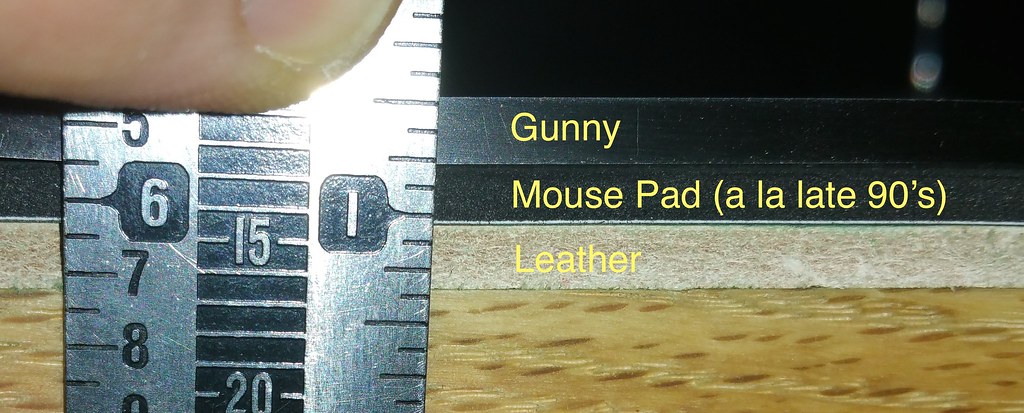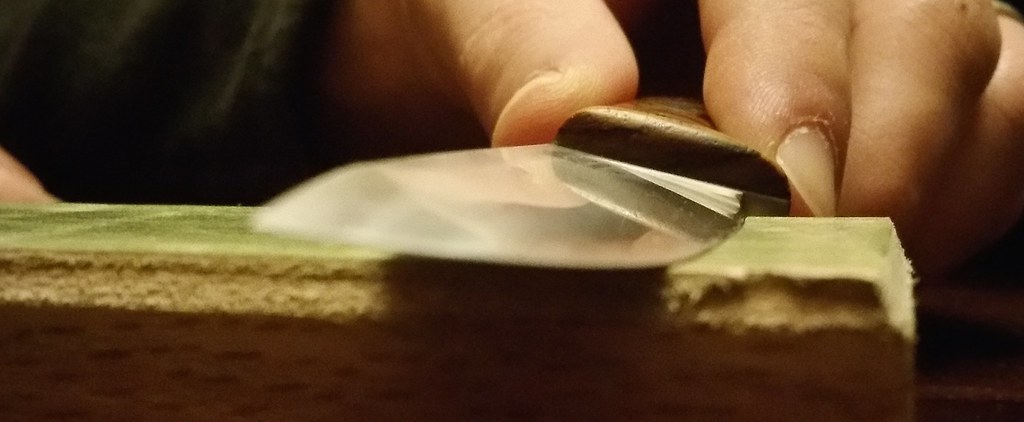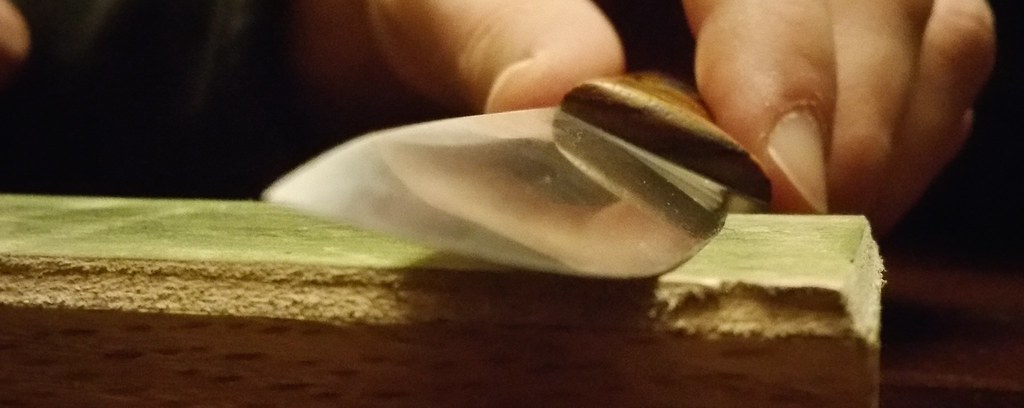Hello,
I'm a bit confused about convex sharpening and cannot reconciles the variety of things I've read. Your assistance is much appreciated.
Here are some facts about my situation
- Knife: BRKT Gunny Hunter A2.
- Experience: Novice
- Device: I've chosen sandpaper over soft backing rather than stones+rolling the wrist
- Before using sandpaper, I'm trying green compound on leather + sharpie to practice
- ~7oz leather glued to a board
Here's the crux of the confusion. I've marked the blade with a sharpie to see how things go. If I lay the knife flat and raise it until there is no shadow and strop, only the marker on the blade/shoulder is cleared. The very edge is still black. In order to get the edge (extra polished shiny part of the zero convex OR the micro bevel?!), I have to raise the knife to "Bite Angle" (i.e. where I counter-strop raising the angle until the knife bites, then lower the angle a tad and strop).
I've attached 3 images:
- How thick the leather is, how thick a mouse pad I have is (maybe use this? Or get a thicker squishier one?)
- The lower angel (where the marker on the blade is cleared)
- The higher angel (where the marker on the edge is cleared)
So....
- In order to lay the knife flat (low angle) should I be using a 1/4" mouse pad (from early 90's) instead of the leather?
- To maintain a full convex, Should I use a higher angel for the edge and a lower angel for the blade/shoulder? If so, then where is the "easy convex" soft backing trick?
- Is it that the blade isn't zero convex?
- Do I need to roll my wrist (in which case, might as well jump in the deep end and try stones for convex?)
What am I doing wrong? Or what have I got wrong? My impression was that for convex, a soft backing would be used and then most of the blade and edge would be kept "in-line", sharpened/ground-off uniformly.
Thanks again,
Shamshir.



I'm a bit confused about convex sharpening and cannot reconciles the variety of things I've read. Your assistance is much appreciated.
Here are some facts about my situation
- Knife: BRKT Gunny Hunter A2.
- Experience: Novice
- Device: I've chosen sandpaper over soft backing rather than stones+rolling the wrist
- Before using sandpaper, I'm trying green compound on leather + sharpie to practice
- ~7oz leather glued to a board
Here's the crux of the confusion. I've marked the blade with a sharpie to see how things go. If I lay the knife flat and raise it until there is no shadow and strop, only the marker on the blade/shoulder is cleared. The very edge is still black. In order to get the edge (extra polished shiny part of the zero convex OR the micro bevel?!), I have to raise the knife to "Bite Angle" (i.e. where I counter-strop raising the angle until the knife bites, then lower the angle a tad and strop).
I've attached 3 images:
- How thick the leather is, how thick a mouse pad I have is (maybe use this? Or get a thicker squishier one?)
- The lower angel (where the marker on the blade is cleared)
- The higher angel (where the marker on the edge is cleared)
So....
- In order to lay the knife flat (low angle) should I be using a 1/4" mouse pad (from early 90's) instead of the leather?
- To maintain a full convex, Should I use a higher angel for the edge and a lower angel for the blade/shoulder? If so, then where is the "easy convex" soft backing trick?
- Is it that the blade isn't zero convex?
- Do I need to roll my wrist (in which case, might as well jump in the deep end and try stones for convex?)
What am I doing wrong? Or what have I got wrong? My impression was that for convex, a soft backing would be used and then most of the blade and edge would be kept "in-line", sharpened/ground-off uniformly.
Thanks again,
Shamshir.



